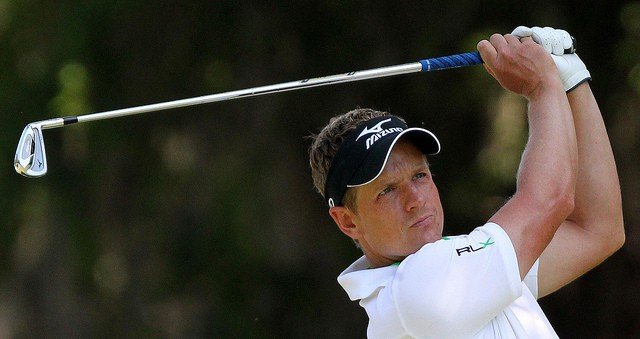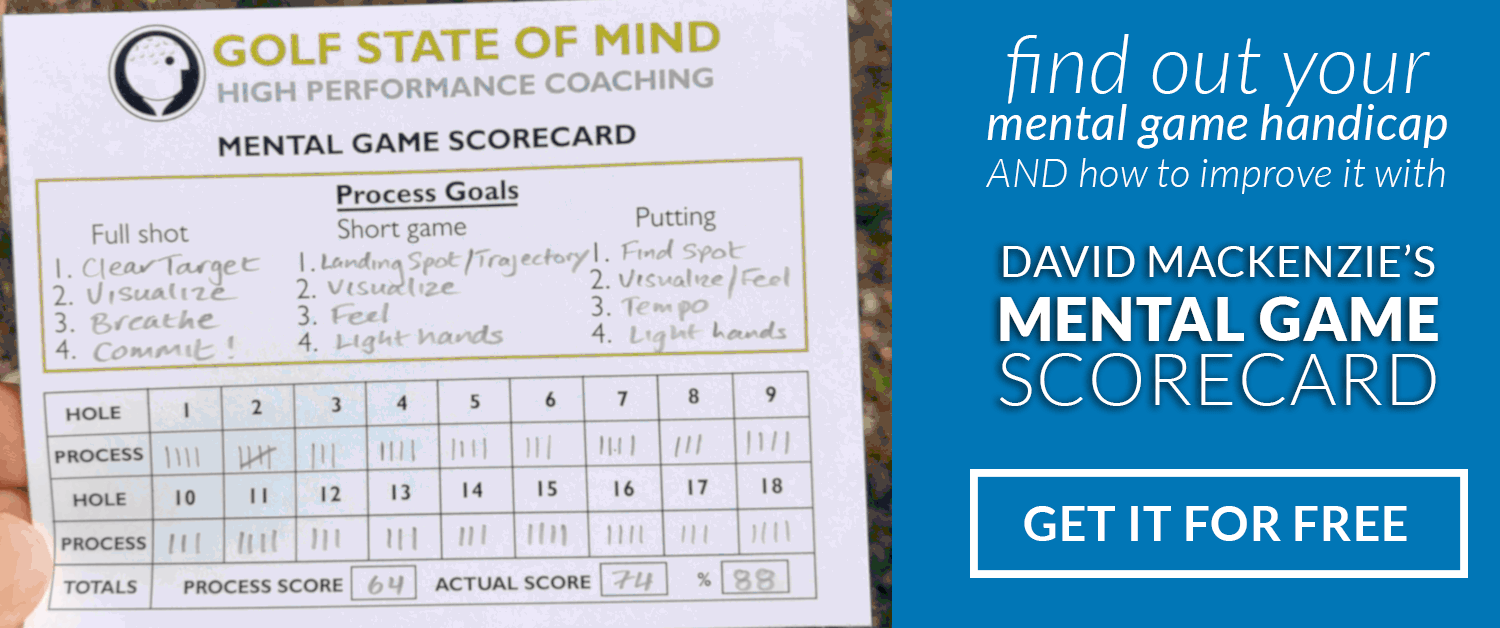
How To Trigger Confidence On Demand
Throughout the years I’ve been a mental coach, there’s one technique in particular that has proved highly effective in getting my players in the right state of mind for a great performance.
This technique has been used by many Tour players to win major championships.
We all know that some days you just “feel it” and others you don’t. But what if you could somehow trigger that mindset you have on your best days instead of letting it occur at random? In this lesson, I’ll show you how.
In a game where success is highly dependent on mental and emotional state, what kind of “mood” you are in will make a big difference in how well you perform.
A more positive mood produces better swings and putting strokes. Same skill level, different result. This can certainly help explain fluctuations in a player’s scores from week to week.
So why is it that some days you feel more confident than others? Recent performances notwithstanding, it’s undeniably true that there are “confidence triggers” along the way that get you into that mindset or mood. Conversely, there might be certain triggers that work the other way which create a more negative mind-set.
At present, most of these triggers are unconscious, i.e. you don’t know what they are but they do have an affect. In this article, I’d like to show you some ways that you can consciously “program” these triggers to produce a more confident mindset (on demand) using a technique called NLP for golf.
NLP stands for Neuro Linguistic Programming, which as the name suggests, can help us “program” our brain’s behaviour (Neuro) with the right communication (Linguistic).
Let me give you some examples of Triggers in action.
- That feeling you get when you hear certain songs that are nostalgic to you
- Advertisers using certain colors in their marketing to help trigger a mood within you
- A certain smell can evoke a mood and remind you of someone or something
- Your success on certain holes or courses in the past can make you feel confident or fearful about that same hole/course in the future
So how does NLP for golf work?
The concept of NLP for golf is that, instead of leaving these powerful mood changing triggers to chance, we design them ourselves. And it works!
Types of trigger
There are 5 types of trigger:
- Verbal (words or self-talk)
- Visual (colors, symbols or images of objects/people)
- Auditory (sound)
- Kinesthetic (touch)
- Smell
Each of us respond differently to these types of trigger, so this is something you will have to experiment with.
Examples of “The anchoring process”:
The anchoring process for NLP for golf is about associating a particular mood or feeling with one of the triggers above. Then you can use that trigger to help reproduce that same feeling/mood. The more that feeling/experience is anchored, the more powerful the trigger will become.
1. Find a quiet place where you will not be interrupted and sit comfortably. You could try focusing on your breathing for a few minutes to quieten your mind. Now recall a time when you’ve been successful on the course. Imagine it as vividly as you can. See yourself walking confidently between shots and try to remember how you felt when you were going through your shot routines.
2. Now “fire the anchor” when this memory of that feeling is strongest. Firing the anchor when the memory is fading which not be as powerful. You can also do this at any time during practice and play when you feel success e.g. perfect drives or pressure putts holed.
Repeating both these ways of anchoring as much as possible will help.
Examples of ways to fire the anchor are:
- Describing the experience with a certain word e.g. “committed” or “free”
- Associating that word with a certain color or a symbol. Louis Oosthuizen’s “Red Dot”
was an example of this - Using a sound to connect it to which you’ll be able to use on the course, like snapping the velcro on your glove
- Pressing your thumb and index finger together or pinging a rubber band on your wrist
With reinforcement, these anchors will get stronger and will help you trigger more confident states of mind when you need. You can use them either in your pre-shot routine or when you need to get you in the mood to play well.
Please leave comments or questions!
Photo courtesy of Keith Allison



This triggering post is very interesting. I have in the past used it. I have anchored more with self talk or some internal focus. Interestingly, while at the gym the other day my trainer told me that there are two ways people get through difficult workout times…internally and externally. I as finding that when I focused internally that I struggled to do a particular cardio routine but when I focused externally… thought about the music playing…I was able to get through the tough part of the routine. Would it be better for me to find an external trigger in golf? What would you suggest?
Great article David! I love NLP and have been working in this field for the last 3 years. I’m so glad you highlighted Anchors and the triggers that can get you into an optimal state to perform your best. This is one of my favourite techniques in NLP and if done effectively can have an amazing impact. Thanks for sharing NLP with the world of golfers, keep up the good work 🙂